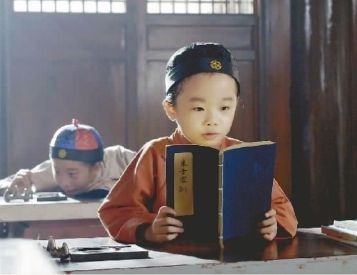Innovations in style, form increase appeal of documentaries

A scene from Family Tradition: A child reads Zhu Family Instructions
As living standards continue to improve, demand for cultural products is becoming increasingly diverse. Documentaries often contain important themes and educational aspects as well as substantial content. However, right now they are unable to attract significant attention because they often simply aren’t entertaining enough.
Recently, a two-episode documentary Family Tradition was screened on CCTV 10, the first systematic narration of family traditions through a documentary format on domestic television, provoking great interest and attention from the audience.
There has been a resurgence of interest in Chinese family traditions these days. The documentary starts with The Home Letters from the Marquis Zeng Guofan, Yan Family Instructions, and Zhu Family Instructions, and other well-known texts of how family education in ancient times, then relates the narration to contemporary society to explore family traditions are passed down from generation to generation.
A family is the basic unit of society. Traditions of a family are the distillation of virtues maintained within the family and one icon of traditional Chinese culture as well. Therefore, the documentary is of great relevance to spreading traditional culture.
Family traditions are the core spirit that binds together a family. They also affect the values and morality of the nation. Today, it is the responsibility of the media to shape public values to cope with challenges in this transitional period of society.
Family Tradition reminds people that subjects for documentaries are not confined to nature and the humanities. They can draw on specific issues and offer a perspective on the connections between the past and the present. In this way, they serve as a channel for the popularization of socialist core values.
Finding ways to convey correct values through the illustration of family traditions is an urgent task for mass media. With its direct and vivid presentation, the documentary provides a model of how to appeal to the hearts and minds of audiences. For example, in the documentary, Zeng Guofan (1811-72), an eminent Han Chinese official and Confucian scholar of the late Qing Dynasty, told his children that reading is the only way to modify one’s disposition. This instruction has become a popular phrase.
Documentaries used to adopt a didactic approach, usually narration accompanied by pictures, coupled with some interviews. This style can easily bore the audiences in terms of information transmission and artistic appeal.
Recently produced documentaries including Family Tradition, The Third Pole, and The Old Summer Palace, all use innovative methods to convey meaning. Family Tradition innovates in terms of content, as it integrates stories, history and exquisite pictures in an original way. The Old Summer Palace uses technology to reproduce magnificent scenes of the grand royal garden at the height of its splendor when it was touted as the “Garden of Gardens.” The Third Pole is inventive in terms of narrative, as it highlights storytelling and transmits complex concepts through simple anecdotes.
Documentaries should be rooted in traditional Chinese culture while innovating in terms of form and content, and aspiring toward both aesthetic value and a humanistic spirit. Chinese documentary producers are lucky to be able to draw on plentiful resources in nature, history and the humanities and enjoy a big domestic market. Still, we should strive for the global market to make it serve international exchanges and spread our culture through a feasible means of transmission.
